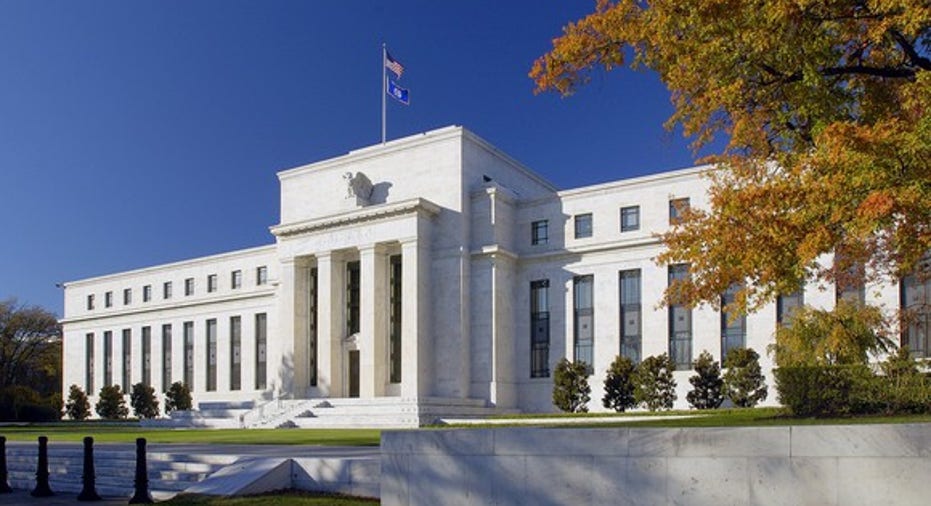What You Need to Know About the Fed's Annual Capital Plan and Stress Test Assessments

Image source: Federal Reserve via Flickr.
What do banks and human hearts have in common? Both need regular checkups.
Bank holding companies (BHCs) in the U.S. with $50 billion or more in total consolidated assets, including the U.S.-based arms of foreign banks, are among the largest and most complex institutions in the nation. These institutions are required to undergo annual assessments, overseen by the Federal Reserve, of their capital planning and ability to withstand stressful conditions.
This year, 33 BHCs participated in the Fed's annual assessment.
What exactly are these annual assessments, and why should investors care? To learn more, read on.
What do the fed's assessments measure?
When you undergo a heart stress test, your doctor examines how your heart reacts to various levels of exertion. Stress tests for BHCs are mathematical simulations of what would happen to a bank if it were to run into stressful situations such as a steep drop in asset prices or a significant rise in unemployment. Capital planning assessments are designed to ensure that BHCs are able to manage their material risks.
Among other things, the tests look at the effects of stress on a BHC's capital and credit quality -- measures of its ability to handle losses and continue to lend to households and businesses during a severe recession. The tests also evaluate the procedures that BHCs have put in place to manage their risk.
"You are simulating how a financial shock would affect a bank's financial condition," said Rebel Cole, a professor of finance at DePaul University.
How did the Fed's assessment program come about?
In the wake of the financial crisis of 2008, the U.S. government took a number of steps to restore confidence in the financial system and reduce uncertainty among investors and the public at large.
In 2009, U.S. bank regulators conducted the first systemwide stress tests of the country's 19 largest BHCs. Since then, the Federal Reserve has implemented two related programs, one called the Comprehensive Capital Analysis and Review (CCAR), the other known as Dodd-Frank Act supervisory stress testing (DFAST). Together, these programs are important tools employed by the federal government to require BHCs to improve their capital positions and prevent another financial crisis.
Many financial institutions increased their leverage in the years leading up to 2008 and were unprepared for financial shocks. Bear Stearns was sold at a bargain-basement price to JPMorgan Chase & Co., while Lehman Brothers tumbled into bankruptcy. Other institutions required massive bailouts at the taxpayers' expense.
"We don't want to have another financial crisis caused by excessive risk-taking," Cole said.
What is the difference between DFAST and CCAR, and how do they work?
DFAST looks at whether the banks, at their current capital levels, are strong enough to handle losses if they were to encounter tough times. The Fed looks at how a bank's current capital would be affected under different hypothetical scenarios of varying degrees of stress.
For instance, this year, under the Fed's "severely adverse" scenario, the global economy would slip into a severe recession, domestic unemployment would jump by 5 percentage points, and short-termU.S. Treasury yields would go negative, meaning investors would pay the U.S. government to hold their money. The Fed examines the results and runs stress tests of its own, using its own models and projections.
With the CCAR, banks must submit their actualcapital plans, i.e., how much they plan to issue in dividends or how much money they plan to spend on share buybacks. The Fed examines whether the banks would be able to make these payments and still meet the Fed's minimum capital requirements during periods of stress. The CCAR also includes a "qualitative" assessment of a bank's ability to manage risk.
How does the Fed use the results of the assessments?
The Fed publishesdetails of the resultsof how the BHCs would perform under the various test scenarios. Underthe CCAR, the Fed might determine that it believes a BHC would fall below its minimum capital requirements if it were to pay out capital during a period of stress. Also, the Fed may raise concerns as to a BHC's ability to handle risk.
Why should investors care about the assessments?
Depending on concerns raised by the Fed, a BHC could be barred from issuing dividends or from doing stock buybacks.
"Ultimately, the idea of stress tests is to prevent another financial crisis," said Philipp Schnabl, a professor of finance at NYU's Stern School of Business. "A safe financial system is important to all investors."
An Alert Investor is a smarter investor.
A secret billion-dollar stock opportunity The world's biggest tech company forgot to show you something, but a few Wall Street analysts and the Fool didn't miss a beat: There's a small company that's powering their brand-new gadgets and the coming revolution in technology. And we think its stock price has nearly unlimited room to run for early in-the-know investors! To be one of them, just click here.
The Motley Fool has no position in any of the stocks mentioned. Try any of our Foolish newsletter services free for 30 days. We Fools may not all hold the same opinions, but we all believe that considering a diverse range of insights makes us better investors. The Motley Fool has a disclosure policy.



















